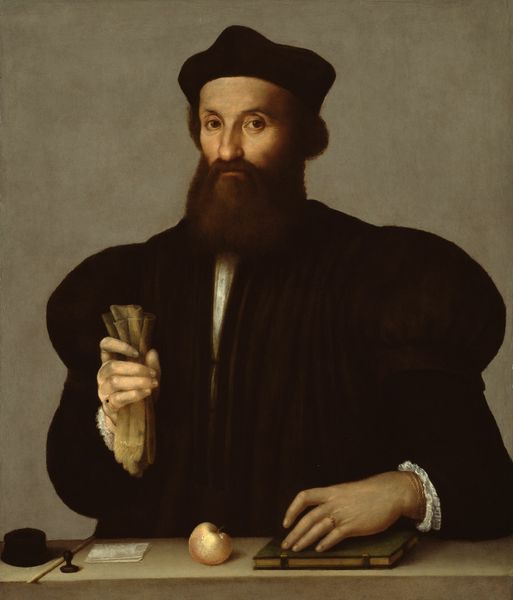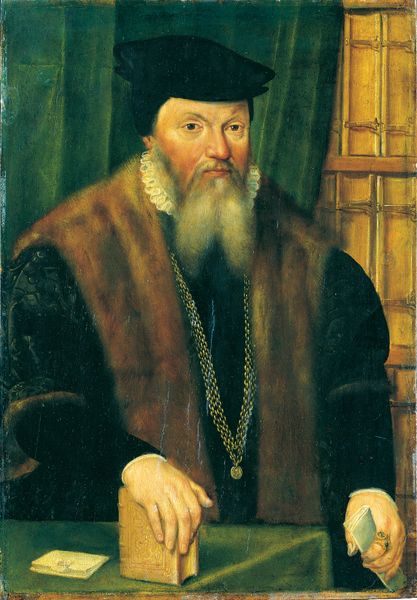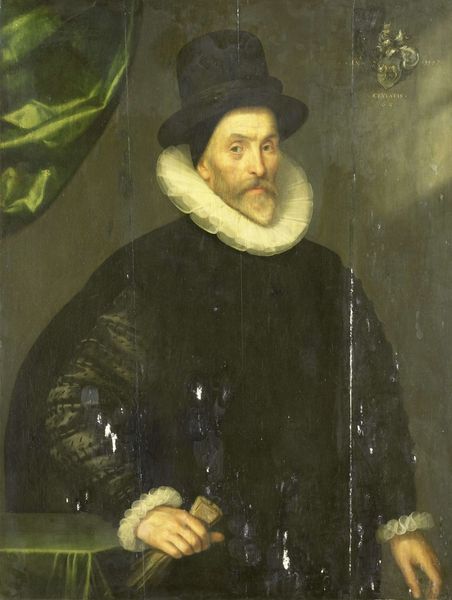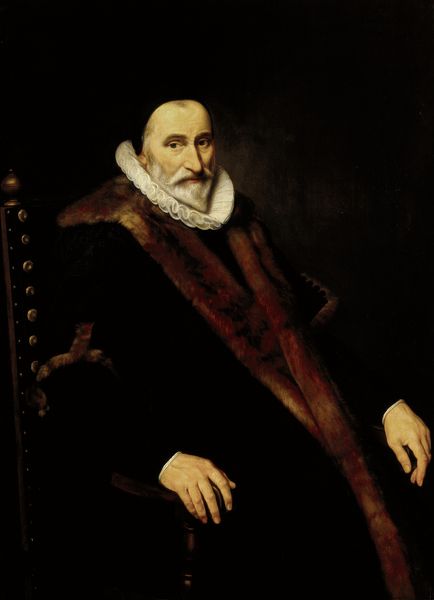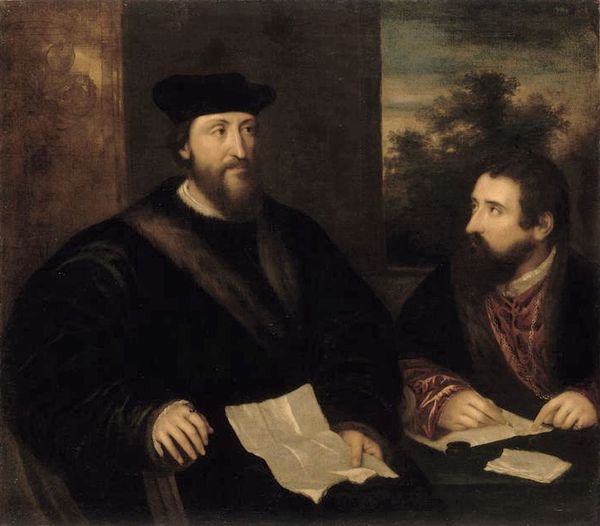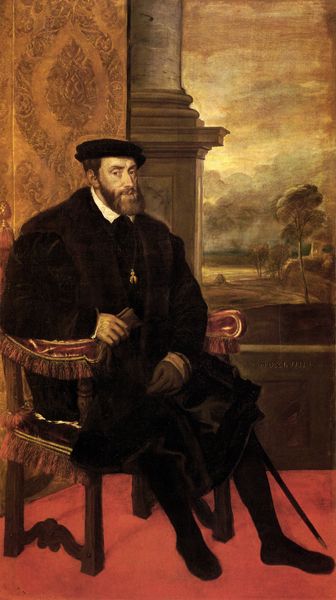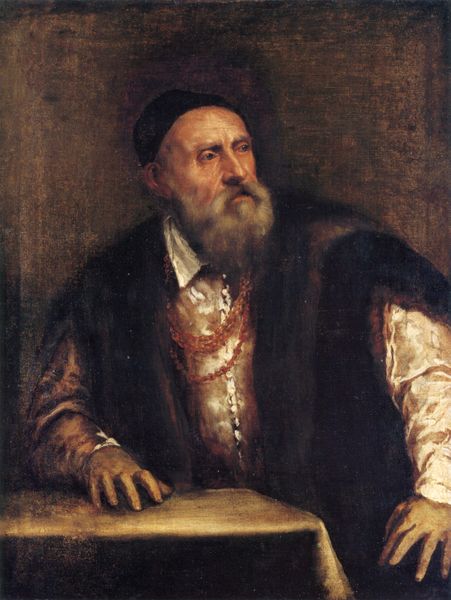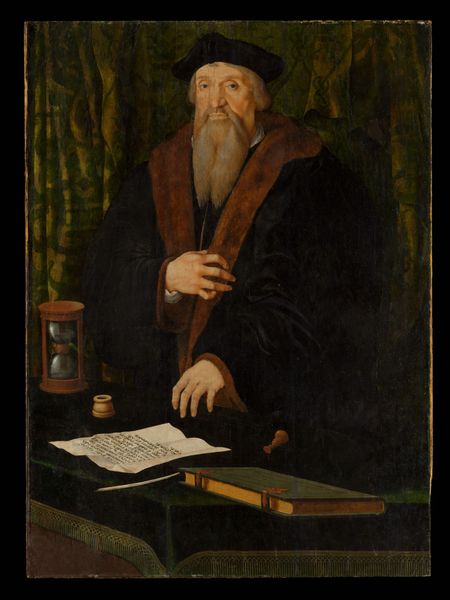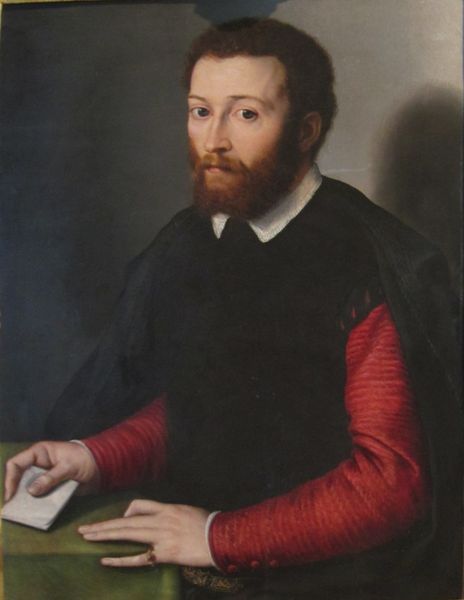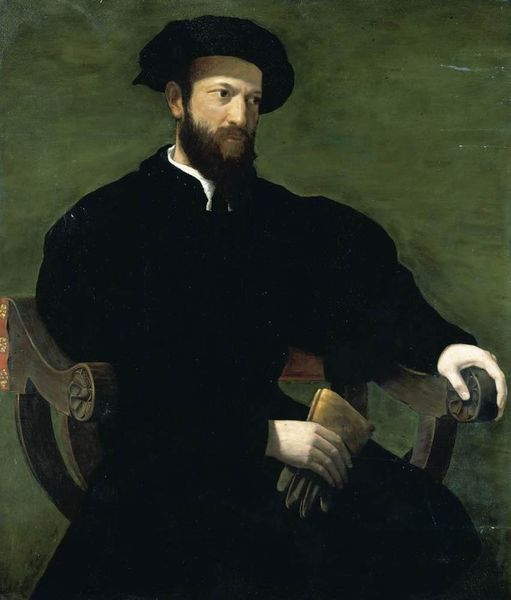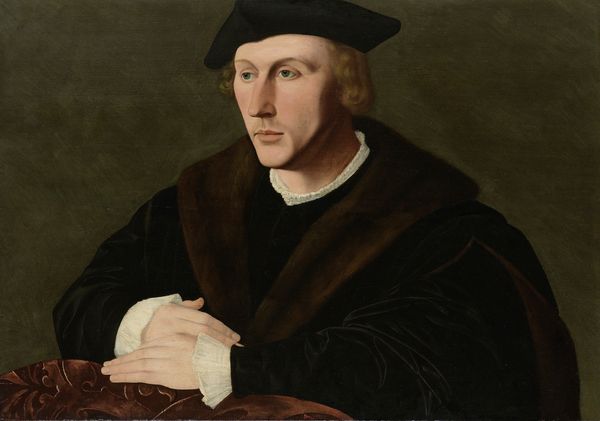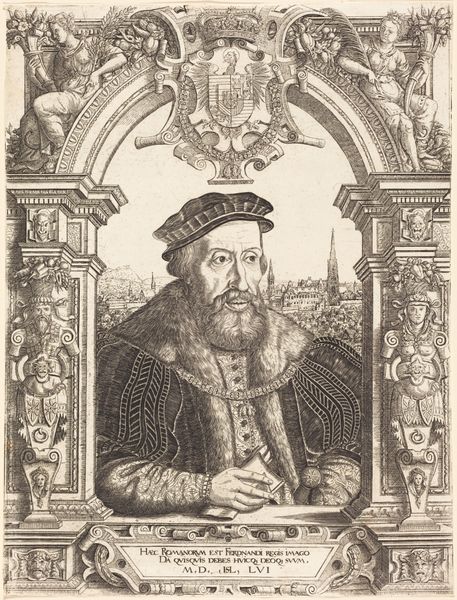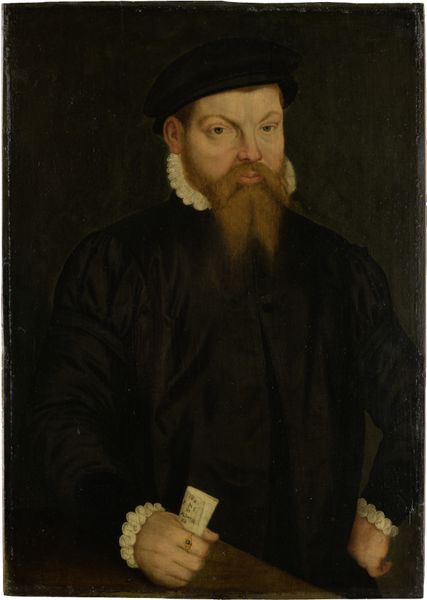
painting, oil-paint
#
portrait
#
painting
#
oil-paint
#
figuration
#
11_renaissance
#
northern-renaissance
Dimensions: 43.5 x 43.5 cm
Copyright: Public domain
Editor: Here we have Hans Holbein the Younger’s "Unknown Gentleman with Music Books and Lute," painted in 1534, an oil painting that possesses a captivating aura of Renaissance intellect. What do you see in this piece, especially considering its time? Curator: The painting speaks volumes about social mobility and self-fashioning in the Renaissance. It isn't just a portrait; it's a statement. Who gets to be portrayed, with what objects, and how does this represent broader societal shifts? Notice how Holbein captures not only the gentleman’s likeness but also the texture of his velvet clothing and the sheen of his lute, marking him as learned, wealthy, and cultured. Editor: That's interesting. I was struck by the ambiguity of the subject—an unknown gentleman amidst all this implied wealth and education. It feels…deliberate. Curator: Precisely. The "unknown" status becomes a point of entry. In a period of evolving social structures, art served as a tool for claiming status. Consider how musical literacy, symbolized by the lute and books, was a signifier of humanist ideals accessible to a burgeoning middle class. Who was being included in these narratives, and equally important, who was excluded? What performative aspects do you notice here? Editor: The sitter’s gaze, directed away from the viewer, adds another layer. He's present but also aloof, self-contained. It doesn't seem like a candid snapshot. Curator: His self-presentation through the lute, musical scores, and elegant clothing points toward a construction of identity – an active process of defining oneself in relation to social and cultural norms. Does Holbein affirm or critique these values, I wonder? What do you make of the tension between the intimacy of a portrait and the performance of social status displayed here? Editor: This reframes my initial understanding entirely! It's not merely a portrait but a social commentary, a depiction of access and aspiration within a very specific historical moment. I’ll never look at a Renaissance portrait the same way. Curator: Exactly! Art doesn't exist in a vacuum. By understanding its historical and social context, we unveil powerful narratives about identity, power, and representation, revealing both the explicit and implicit social dynamics at play.
Comments
No comments
Be the first to comment and join the conversation on the ultimate creative platform.
